9 Types of Blackbirds in Vermont (With Pictures)
Last Updated on
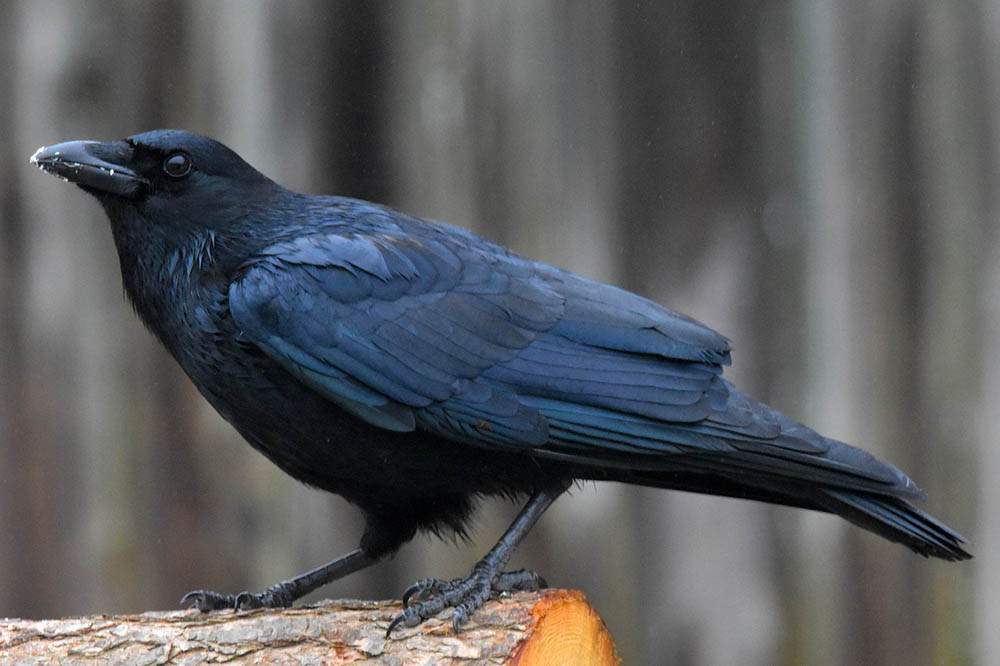
Vermont has a diverse environment and represents a home for various animals and birds. Although you can encounter different bird species in Vermont, all in stunning colors, some of the most beautiful ones are black.
In this article, we’ll provide you with a list of nine types of blackbirds in Vermont and give details about each species. If you find yourself in Vermont after reading this article, you’ll be able to identify numerous blackbirds who live there.

The 9 Blackbird Species in Vermont Are:
1. European Starling

| Scientific name: | Sturnus vulgaris |
| Size: | 8 to 9 inches |
| Habitat: | Towns |
The European Starling is a common blackbird you can find in Vermont. These birds are chunky, but they have short tails and elongated beaks. Although they seem attractive due to their black color that appears purplish-green in summer, these birds are not so welcome in most of the USA.
The reason is that they are invasive, and they frequently attack other bird species and their nests. They are loud, travel in large flocks, and love visiting birdhouses in search of food. However, you should think twice before allowing these birds to access your backyard, as other birds might be in danger.
2. Common Grackle

| Scientific name: | Quiscalus |
| Size: | 11 to 13 inches |
| Habitat: | Open woodlands, city parks, suburban lawns |
The Common Grackle is a large blackbird with long legs and a long tail. Their heads are flat while their bills are longer than in other blackbirds. Although these birds seem entirely black when you observe them from a distance, they have purple heads when under sunlight. Their eyes are golden, and the female representatives are less glossy than the males. These birds commonly gather in large flocks flying in open woodlands and looking for food.
3. Red-Winged Blackbird
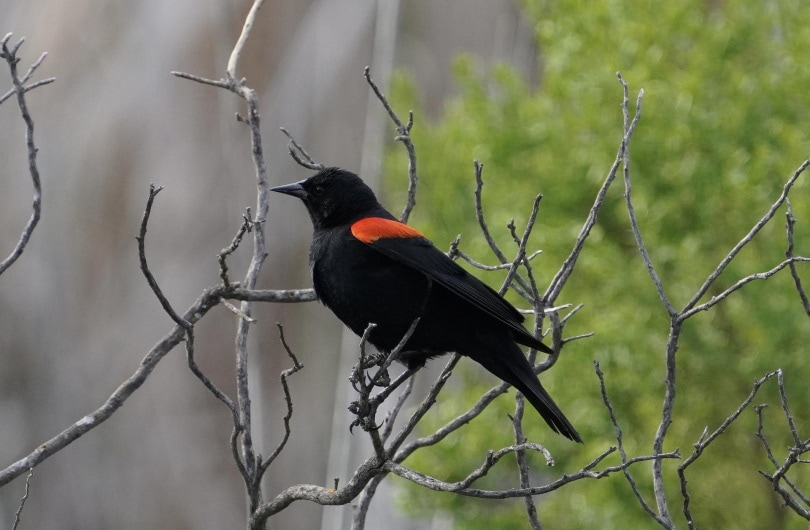
| Scientific name: | Agelaius phoeniceus |
| Size: | 6.5 to 9 inches |
| Habitat: | Marshes, wet roadsides |
The Red-Winged Blackbird is a stunning black bird you can encounter in Vermont and stands out due to the red patch on its wings. They have slender bills and medium-long tails, while the females are brownish compared to males. These birds love to show off and will do everything possible to attract attention.
During winter, Red-Winged Blackbirds form flocks with other Blackbirds and Starlings to look for food. You can commonly find them near wet roadsides, marshes, and along watercourses.
4. Bobolink

| Scientific name: | Dolichonyx oryzivorus |
| Size: | 6 to 8 inches |
| Habitat: | Tall grasslands, fields, meadows |
The Bobolink is another black bird found in Vermont, although only male breeding representatives are black. The females and non-breeding males are typically brown, with dark brown on their backs. These birds are small, with short heads and tails. During spring, the males sing while flying in fields and grasslands while looking for food. During winter, they migrate to warmer areas, commonly in large flocks. You can find them in tall grasslands, fields, and meadows.
5. Rusty Blackbird
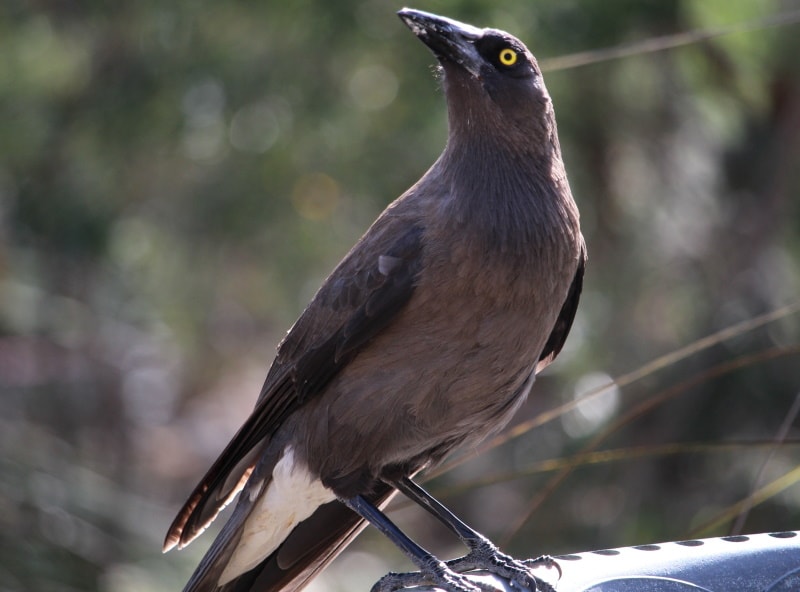
| Scientific name: | Euphagus carolinus |
| Size: | 8 to 10 inches |
| Habitat: | Flooded woodlands, swamps, marshes, edges of ponds |
The Rusty Blackbird is a medium-sized bird with a slim bill and a medium-large tail. They are larger than the Red-Winged Blackbirds and are known for their glossy black feathers. This is another species where the males are black, while the females are gray-brownish with rusty edges on their feathers. In winter, these birds gather in flocks and commonly mix with other birds. You can look for them in flooded woodlands, swamps, and marshes as they prefer moist environments.
6. Brown-Headed Cowbird
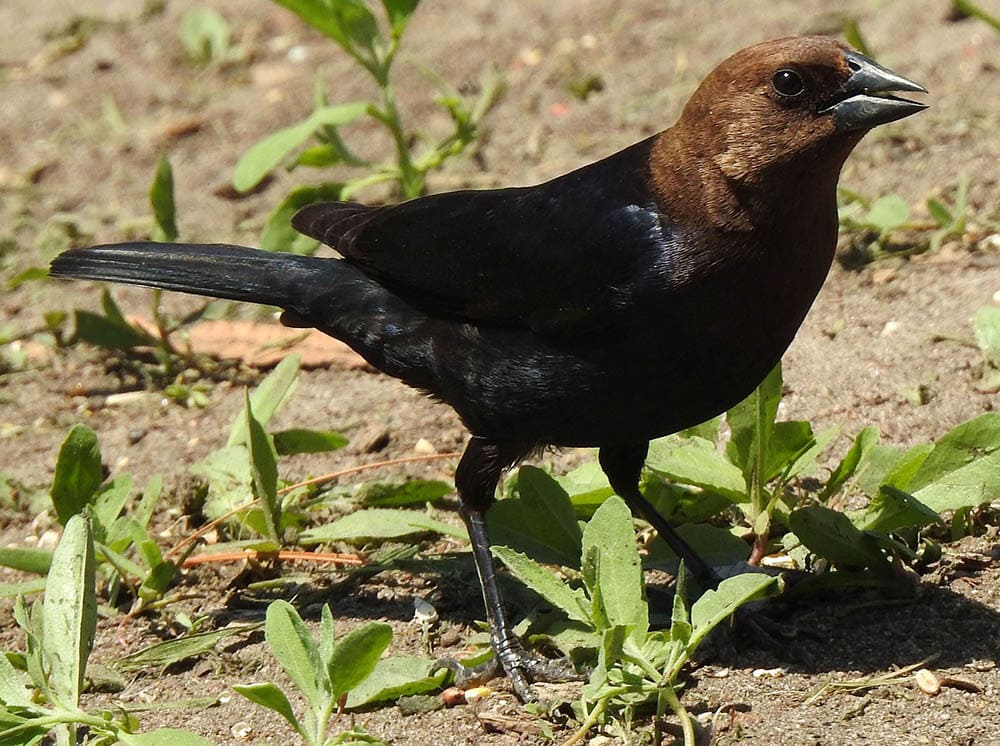
| Scientific name: | Molothrus ater |
| Size: | 6 to 9 inches |
| Habitat: | Fields, pastures, lawns, meadows, forest edges |
The Brown-Headed Cowbird is a smaller blackbird with a thick head and short tail. The males of this species have black, glossy plumage and brown heads. On the other hand, females are entirely brown, with different brown shades across their bodies. These birds typically mix with starlings and other blackbirds. While the males look for food, females build nests. You can commonly find them in fields, pastures, lawns, meadows, and forest edges, and you’ll recognize their exciting song.
7. Yellow-Headed Blackbird
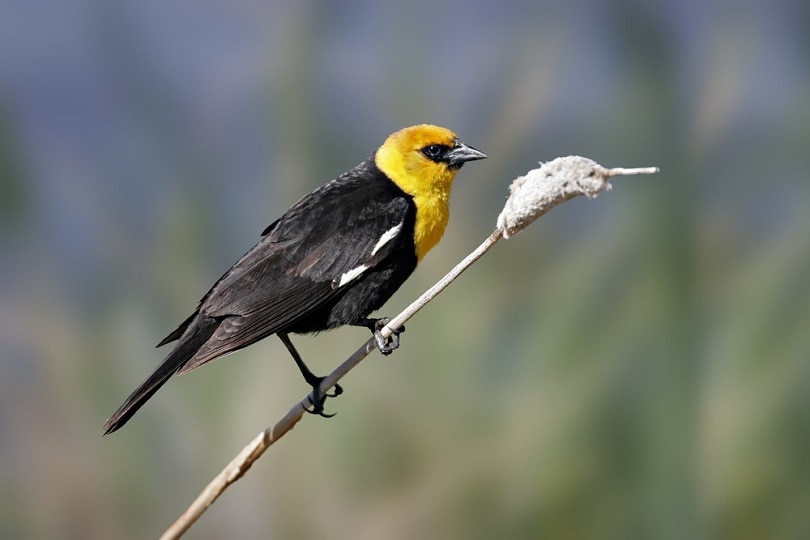
| Scientific name: | Xanthocephalus xanthocephalus |
| Size: | 8 to 10 inches |
| Habitat: | Wetlands, open fields, parklands |
The Yellow-Headed Blackbird, as the name suggests, is a black bird with a distinctive, yellow head. They have sharp, pointy bills and long tails. Again, this is a species where the males have this recognizable appearance while the females are brownish with a yellow but dull head. They will commonly nest in the same areas as other blackbirds, although they can be aggressive towards other birds. Yellow-Headed Blackbirds are omnivores, feeding on plant and animal foods.
8. Brewer’s Blackbird
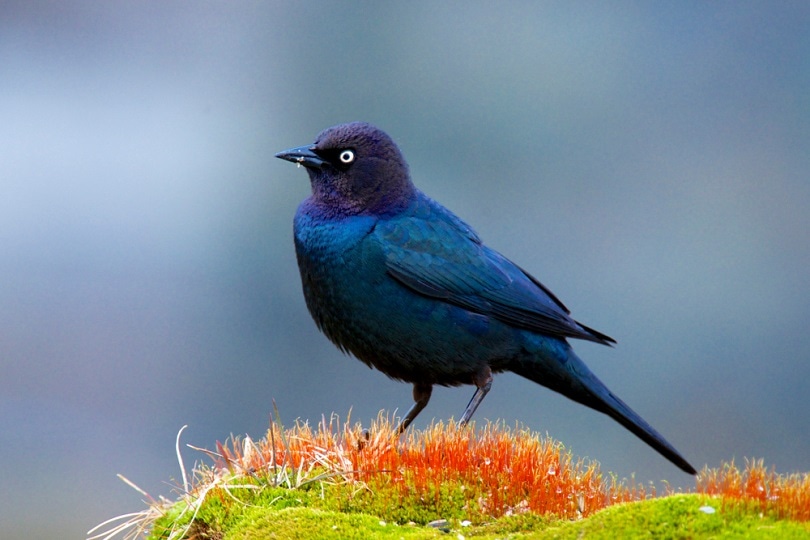
| Scientific name: | Euphagus cyanocephalus |
| Size: | 8 to 10 inches |
| Habitat: | Towns, city parks |
The Brewer’s Blackbird is another common bird in Vermont. While the females are brown, the males are sleek black, with midnight blue and metallic green shades. These birds typically wander around towns and city parks in search of food. They love to visit bird feeders, and you can easily attract them to your backyard. You can notice them in large flocks during winter while they fly to warmer areas. While some of them fly south, there are Brewer’s Blackbirds that fly west instead.
9. American Crow
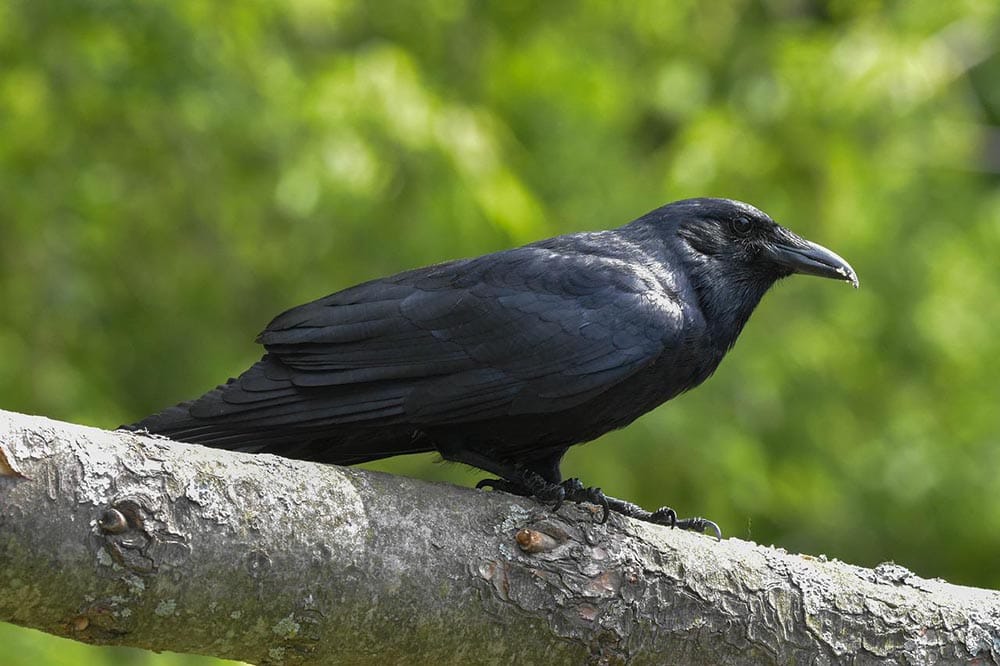
| Scientific name: | Corvus brachyrhynchos |
| Size: | 16 to 20 inches |
| Habitat: | Open woodlands, fields, roadsides, beaches, towns |
The American Crow is a large, entirely black bird you can find throughout North America, including Vermont. These birds are extremely intelligent, and you can notice them almost everywhere, including on roadsides, fields, beaches, and towns. They will typically feed on the ground, eating anything available. Although these birds don’t visit bird feeders frequently, you can attract them to your backyard if you provide enough food, trees, and open space. Many people mix this species with Common Ravens as they are similar but smaller than Common Ravens.

Conclusion
Vermont has a unique ecosystem, and there are various black birds you can encounter. While they are wild, you can still attract some of them to your backyard. Overall, if you love birdwatching, after reading this article, you’ll know how to distinguish black birds in Vermont.
Featured Image Credit: JackBulmer, Pixabay
About the Author Visnja Radosavljevic
Visnja is a creative, adaptable content writer that covers various topics such as DIY, pets, home improvement, travel, gardening, and more. As a young mom and a college student, she didn’t have enough time to balance her personal and work life, so after multiple years of working a regular 9 to 5 job, she decided to pursue her passion and make a living out of it. She has been writing for a couple of years now, helping people to find valuable and interesting information online.
Related Articles:
Monocular vs Telescope: Differences Explained (With Pictures)
10 Types of Hummingbirds in Arkansas (With Pictures)
8 Types of Hummingbirds in Nebraska (With Pictures)
5 Types of Hummingbirds in Idaho (With Pictures)
3 Types of Hummingbirds in Mississippi (With Pictures)
8 Types of Hummingbirds in Kansas (With Pictures)
5 Types of Hummingbirds in West Virginia (With Pictures)
5 Types of Hummingbirds in Ohio (With Pictures)
